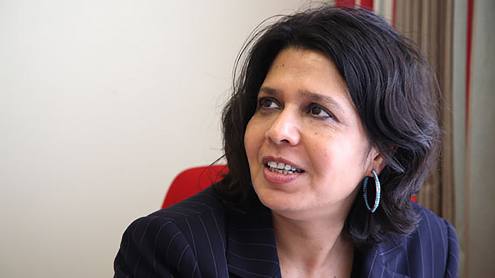When will the next financial crisis be and what will cause it? I recently spent a morning with a group of futurists, as my focal point at SIBOS this year is the long-finance view for the coming century. The key questions for all of us are: when will the next financial crisis take place, what will cause it, and is it predictable?
If we take the first financial crisis as the fall of the Roman Empire, then it was about 1000 years until the second financial crisis occurred, with the collapse of the Medici banks of Renaissance Italy. Four centuries later, the South Sea Bubble and Great Tulip Collapse took place. About 250 years after that, we hit the Great Depression; and, 80 years after that, the world's finances imploded in the subprime crisis and global credit crunch.
Future fallacy
On that basis, you could bet on the next crisis being anything between 30 and 50 years from now. So what would cause it? Here is a view you could take of the factors contributing to the next financial collapse. I should say that it does not make for fun reading, but the logic could have some grain of accuracy.
2011: Banks globally are heavily regulated, taxed and governed to avoid another subprime crisis.
The focus is on derivatives, liquidity, capital and governance.
2016: China opens its markets to full financial services, with a rocking stock exchange in Shanghai that becomes the world's second major investment banking city by volume and value by 2020, just behind New York.
2019: Rather than creating a world reserve currency, the investment community creates a basket of currencies to avoid too much exposure to one economy. Nevertheless, the decision to place a higher weighting towards the renminbi rather than the dollar creates issues for the US, which has spent most of the 2010s in stagnation.
2022: The Middle East enters a major crisis, as oil becomes less needed as a commodity. Iran and Israel go to war and there is a huge UN effort to bring stability to the region. Sovereign wealth from the Gulf flows out towards rising economies, such as those in Africa, and tensions continue to rage across the Middle East.
2025: Africa's economies are moving onwards and upwards. As with the BRICs, Goldman Sachs creates a new investment portfolio known as CAGES - Congo, Angola, Guinea, Ethiopia and Sudan - where natural resources of platinum, cobalt, gold, diamonds, manganese, uranium, chromium and tantalite are abundant.
2032: The quiet rise of India as the world's second largest economy has largely gone unnoticed but, in 2032, for the first time this century, China's economy grows by less than 3%. This is attributed to the lack of skills in the country, and is a reflection of the ageing population in China and lack of new blood.
2039: India's continuously booming economy creates friction with its rival, China, and a cold war commences between them. Like the US/Soviet Cold War of the previous century, no battles take place - at this stage - but the economic controls freeze out much of China from India's trading partners and vice versa. The result is an economic climate where India's investment community trades within India and China's within China.
2044: India continues to enjoy success as a stable and harmonised country. China becomes less stable as the government struggles to maintain investment and trading, and to avoid the inflationary pressures created by its exposure to investments in Africa for commodities that can no longer be used. The Chinese economy fails to achieve growth rates above 1% for three quarters, and the government determines that the renminbi needs devaluation.
This angers the US and Europe, which have major investments in Chinese land and other illiquid stocks, along with major reserves of Chinese currency.
2050: The outflow of investment by US and European investment houses from China results in aggressive currency arbitrage between the renminbi and the Indian rupee, with the latter winning as the renminbi's status as a reserve currency ends. The resultant big betting against the continued stability of China causes the cold war between India and China to spill over into skirmishes. A period of major global instability ensues. The China Crisis is put down to currency speculation among the world's capital markets, created by complex foreign exchange instruments intertwined between the major economies: nothing to do with housing this time.
Chris Skinner is an independent financial commentator and chairman of London-based The Financial Services Club (www.thefinanser.com)







